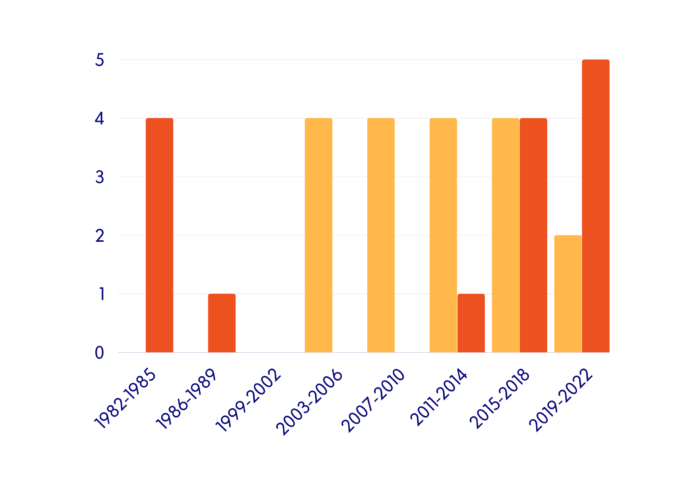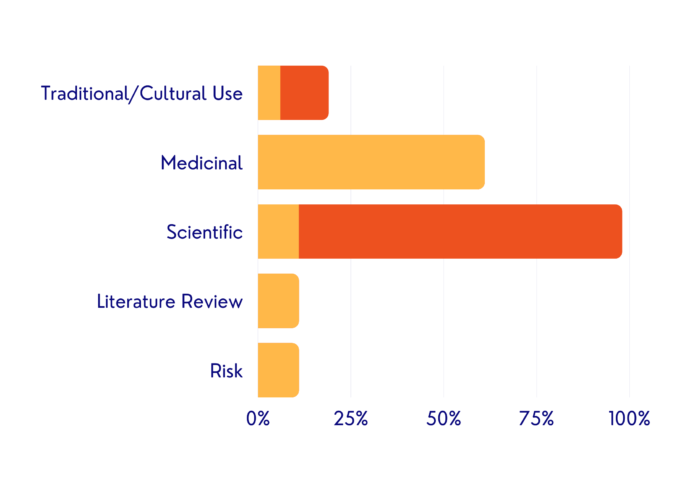A Spatial Literature Review of the Human Impacts on Betula utilis and Betula papyrifera
Independent Research
In my second year at UTM, I did a spatial literature review of the human impacts on two birch species, Betula utilis and Betula papyrifera. More specifically, I analyzed the existing scholarly literature focusing on the effects of climate and environmental changes (2017 to 2022) and the human use (1982 to 2022) of the two birch species.
Birch
Birch tree species have been used by humans for thousands of years for medicinal, domestic, agricultural, and commercial purposes (Lewington, 2018). Currently, there are around 60 birch species (Wang et al., 2016). Recently, birch species have been subject to a lot of attention because of human exploitation and possible effects of climate and environmental changes on the growth and distribution of these species. My research specifically focused on Betula utilis, found in the Himalayas, and Betula papyrifera, found in North America. Through my research, I wanted to understand if these two birch species were at risk because of human activities.
Research Process
My research process was broken down into three stages: 1) Data collection, 2) Data entry, and 3) Spatial analysis.
- Data Collection: I used Google Scholar and the University of Toronto database to collect scholarly articles for my research.
- Data Entry: For every article I collected, I documented the following information: Article Title, Author(s), Date of Publication, Abstract, Type of Birch Specie, Site (if available), Longitude/Latitude (if available), and Link to the Article.
- Spatial Analysis: Using ArcGIS Online, I created a layer labeled after each birch species that showed the research site(s) of the climate and environmental change-related scholarly literature. Then, I exported the web layers of the birch species from ArcGIS Online and created and Esri Web App using Web AppBuilder to showcase the spatial distribution of the two specie’s research sites.
Research Findings
In total, 88 articles were collected; 55 of them were climate and environmental change-related, and 33 of them were human use-related. For the climate and environmental related articles, 24 of them were on Betula papyrifera and 31 of them were on Betula utilis. For the human use articles, 15 of them were on Betula papyrifera and 18 of them were on Betula utilis. Clearly, Betula utilis is more heavily researched for both its human use and the effects of environmental impact compared to Betula papyrifera. Figures 2 and 3 show the publication dates of the articles I collected.


I was also interested in the particular focus of the human use articles. For Betula papyrifera, the articles I found mainly focused on scientific research and traditional and cultural uses of the species, with the former being the focus of most of the articles. On the other hand, the articles I found on Betula utilis covered a wide range of topics including scientific research, traditional and cultural use, medicinal use, literature reviews, and risks to the species. More than half the articles I collected were primarily focused on the medicinal properties of the birch species.

Significance of the Research
Despite Betula papyrifera being categorized as a ‘safe’ species and Betula utilis being categorized as a ‘least concern’ species (“Betula Papyrifera”, n.d. & Gowthami et al., 2021), the increasing prevalence of scholarly literature on the possible environmental impacts on these birch species is concerning. Moreover, these species are threatened because of human exploitation, deforestation, construction activities, as well as other human impacts (Ganie, 2019). Hence, more research and steps need to be taken to protect Betula utilis and Betula papyrifera as well as the species that exclusively depend on them.
Interested in knowing more about my research in depth, including how I used ArcGIS for the literature review? Then, view the StoryMap I created for my research.
References
Betula papyrifera. NatureServe Explorer 2.0. https://explorer.natureserve.org/Taxon/ELEMENT_GLOBAL.2.128519/Betula_papyrifera.
Ganie, Tali, B. A., Khuroo, A. A., Reshi, Z. A., & Nawchoo, I. A. (2019). Impact assessment of anthropogenic threats to high-valued medicinal plants of Kashmir Himalaya, India. Journal for Nature Conservation, 50, 125715–. https://doi.org/10.1016/j.jnc.2019.125715
Gowthami, R., Sharma, N., Pandey, R., & Agrawal, A. (2021). Status and consolidated list of threatened medicinal plants of India. Genetic resources and crop evolution, 68(6), 2235–2263. https://doi.org/10.1007/s10722-021-01199-0
Lewington. (2018). Birch. Reaktion Books.
Wang, Mcallister, H. A., Bartlett, P. R., & Buggs, R. J. A. (2016). Molecular phylogeny and genome size evolution of the genus Betula (Betulaceae). Annals of Botany, 117(6), 1023–1035. https://doi.org/10.1093/aob/mcw048
